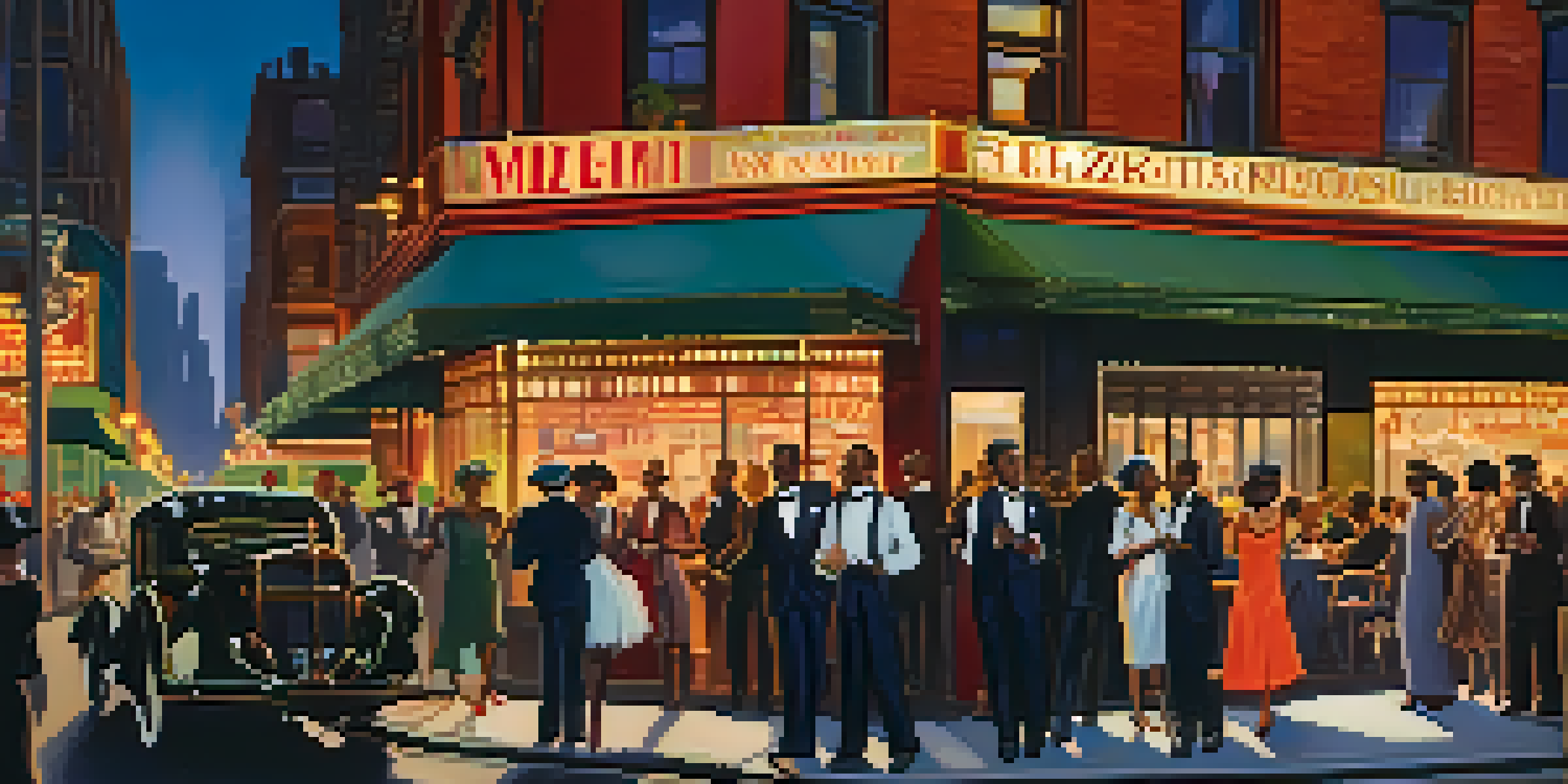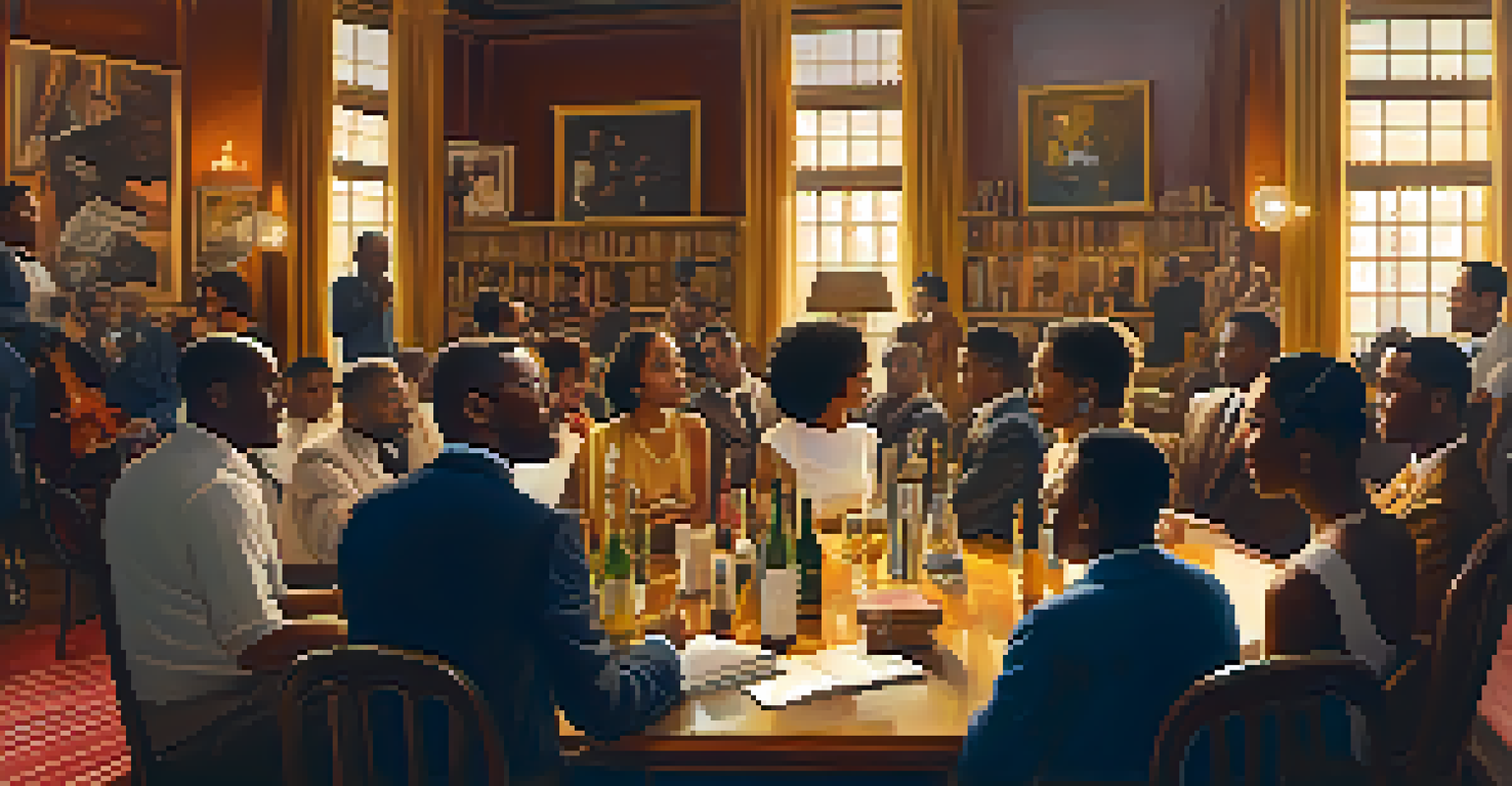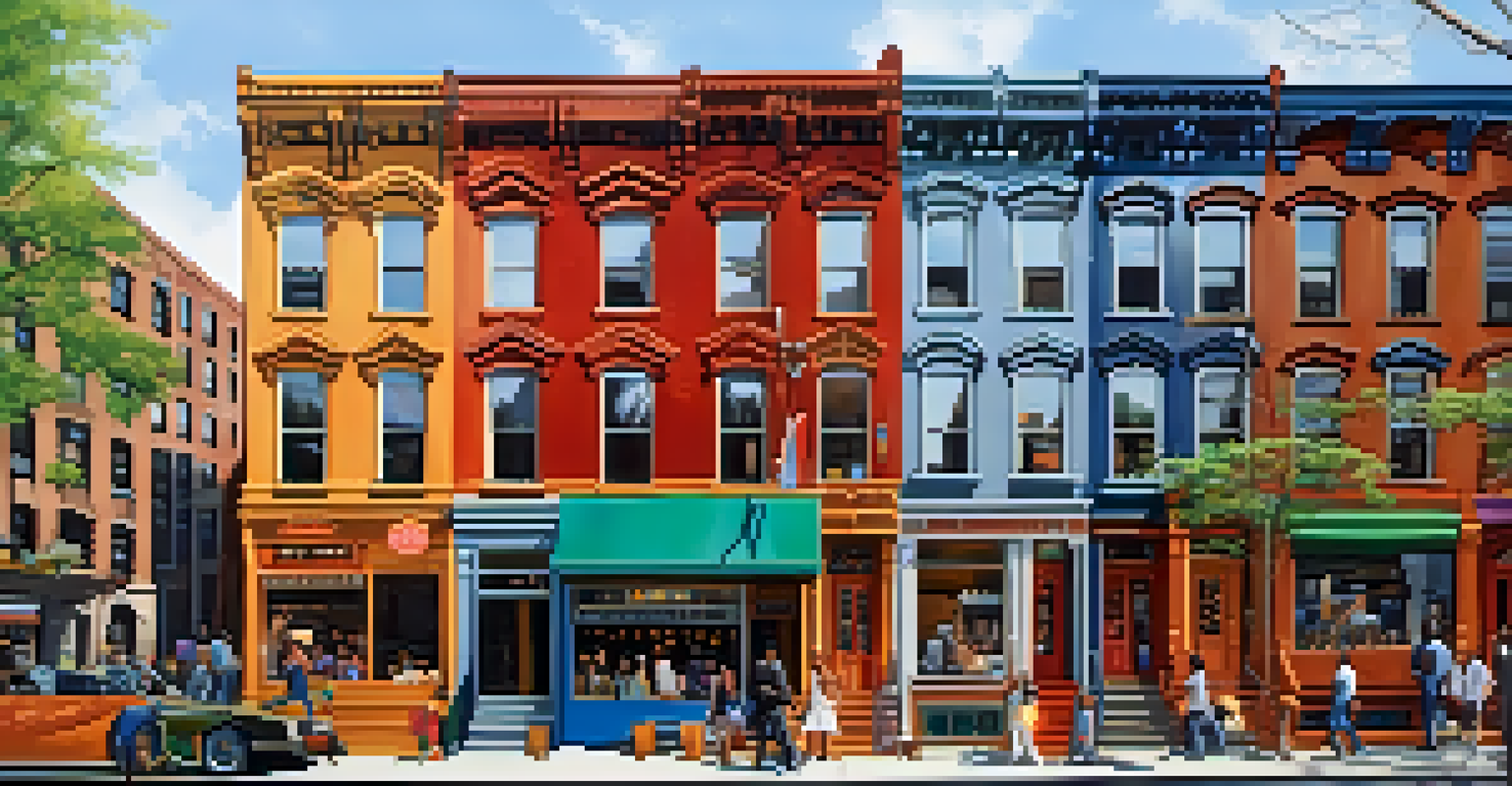Historical Significance of Harlem: A Cultural Journey

Harlem's Roots: A Journey to the Past
Harlem, a neighborhood in Upper Manhattan, has a rich history that dates back to the 17th century. Originally a Dutch settlement, it was named after the city of Haarlem in the Netherlands. Over the centuries, Harlem evolved from farmland to a bustling urban community, becoming a hub for African American culture in the early 20th century.
Harlem is a place where you can be free to be who you are.
By the late 1800s, many African Americans began migrating to Harlem, seeking better opportunities and escaping the South's oppressive conditions. This influx of diverse cultures laid the foundation for Harlem's future as a vibrant center of creativity and social change.
Understanding Harlem's roots helps us appreciate how its unique blend of cultures and histories has shaped not only the neighborhood but also the broader narrative of American culture.
The Harlem Renaissance: A Cultural Explosion
The Harlem Renaissance, which flourished during the 1920s and 1930s, marked a pivotal moment in American history. This cultural movement celebrated African American art, literature, music, and intellectualism, giving rise to iconic figures like Langston Hughes, Zora Neale Hurston, and Duke Ellington. It was a time when creativity thrived, with jazz clubs and literary salons bustling with energy.

This period not only showcased the talents of African Americans but also challenged the prevailing racial stereotypes of the time. The Harlem Renaissance fostered a new sense of identity and pride, inspiring future generations to embrace their heritage.
Harlem's Rich Cultural Heritage
Harlem's vibrant history as a center for African American culture has shaped its identity and influenced American culture at large.
The legacy of this cultural explosion continues to influence artists and thinkers today, reminding us of the power of art as a vehicle for social change.
Harlem's Impact on Music: The Birth of Jazz
Harlem holds a special place in the history of music, particularly as the birthplace of jazz. In the early 20th century, clubs like the Cotton Club and the Apollo Theater became famous for hosting legendary musicians. The rhythmic beats and improvisational style of jazz not only captivated audiences but also became a form of expression for African Americans.
The function of art is to do more than tell it like it is—it’s to imagine what is possible.
Jazz emerged from a fusion of African rhythms, blues, and European musical traditions, making it a truly American art form. It provided a voice for the struggles and aspirations of the African American community, resonating far beyond Harlem's borders.
Today, jazz remains a vital part of Harlem's identity, with annual festivals and live performances celebrating this rich musical heritage.
Art, Literature, and the Harlem Experience
In addition to music, Harlem has been a fertile ground for literature and visual arts. Writers and artists have used their craft to depict the complexities of life in Harlem, capturing both its struggles and triumphs. The works produced during this time often explored themes of identity, race, and social justice.
Prominent figures like Jacob Lawrence and Romare Bearden created powerful visual narratives that reflected the African American experience. Their art became a means of documenting history and advocating for change, influencing generations of artists and activists.
Harlem Renaissance's Lasting Impact
The Harlem Renaissance of the 1920s and 1930s celebrated African American creativity and helped redefine cultural identity, inspiring future generations.
Today, Harlem's vibrant arts scene continues to attract creatives from all over, ensuring that the neighborhood remains a dynamic hub of cultural expression.
Harlem as a Center for Activism and Change
Throughout its history, Harlem has been a focal point for social and political activism. From the early civil rights movements to contemporary protests, residents have used their voices to advocate for equality and justice. Leaders like Marcus Garvey and Malcolm X emerged from Harlem, inspiring countless individuals to join the fight against oppression.
The activism in Harlem has often been intertwined with its cultural movements, as art and literature have played crucial roles in raising awareness and mobilizing communities. This rich tradition of activism continues today, as new generations take up the mantle to address ongoing social issues.
Recognizing Harlem's role as a center for change allows us to appreciate the resilience and determination of its residents, who have consistently sought to uplift their community.
The Evolution of Harlem: Gentrification and Change
In recent years, Harlem has undergone significant changes due to gentrification. As the neighborhood has become more desirable, rising property values and new developments have led to both revitalization and displacement. This transformation has sparked conversations about the balance between preserving Harlem's cultural heritage and accommodating new residents.
While gentrification has brought new businesses and opportunities, it has also raised concerns about the erasure of long-standing communities and traditions. Residents and activists are now working to ensure that Harlem's rich history is honored and that the voices of longtime residents are heard in the development process.
Gentrification's Complex Effects
While gentrification has revitalized Harlem, it also raises concerns about the displacement of long-standing communities and the preservation of its cultural legacy.
This ongoing evolution reflects broader trends in urban areas across the United States, highlighting the challenges of maintaining cultural identity in a rapidly changing world.
Harlem Today: A Cultural Mosaic
Today, Harlem stands as a vibrant cultural mosaic, blending its rich history with contemporary influences. The neighborhood is home to a diverse population, with new and longstanding residents contributing to its dynamic spirit. Cultural institutions, such as the Studio Museum and the Schomburg Center for Research in Black Culture, continue to celebrate and preserve Harlem's heritage.
Events like the Harlem Book Fair and the Uptown Arts Stroll showcase the neighborhood's artistic talents, while local restaurants and shops reflect its culinary diversity. This melding of old and new creates a unique atmosphere that attracts visitors and locals alike.

As we explore Harlem today, we see a community that honors its past while embracing the future, ensuring that its cultural journey continues to thrive.